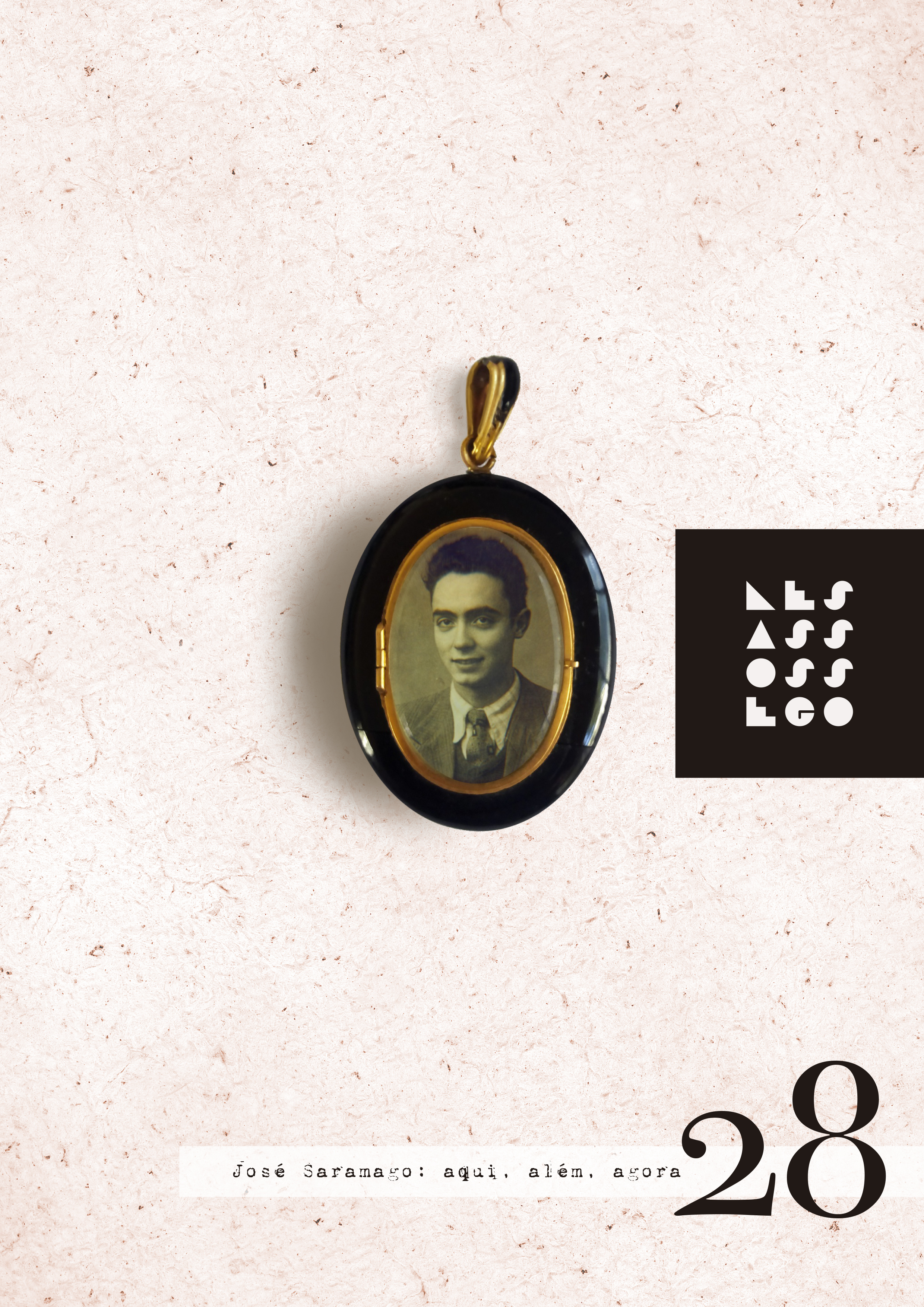Between fiction and history: the aesthetic organization in José Saramago's novel
DOI:
https://doi.org/10.11606/issn.2175-3180.v14i28p22-46Keywords:
Fiction and history, Historiographical discourse, Compositional and architectural forms, Saramago's narrativeAbstract
This article aims to understand the discussion of the role of the History of Portugal in the mode of aesthetic organization in José Saramago's novel that generates the materialization of the aesthetic object. For analysis, the novel "The History of the Siege of Lisbon" will be used as an artistic object of analysis, as it is believed that the organization of the Saramaguiano aesthetic object takes place through the game between fiction and history, fulfilling a compositional aesthetic function determined by the architectural organization designed by the creator author. Getting in touch with this specific form of organization of Saramago is also getting in touch with the image of the tradition that History has in the country and how it is related to the subjects that transit there. Just as, in this article, the study of the novel, postulated by Mikhail Bakhtin (2014), helps to visualize this constitution of this contemporary aesthetic object, the studies of Eduardo Lourenço and Professor Dr. Teresa Cristina Cerdeira help to understand the relationship of the Portuguese with History, and the concept developed by Hayden White (2014) guide the look at the form of constitution of historical discourse, as well as its almost direct relationship with the artistic-literary discourse. In this exhibition, it is intended to conclude that José Saramago's novel is constituted through the relationship established between fiction and history, and this relationship is determined by the valuation placed in the architectural plan elaborated by the author-creator.
Downloads
References
ARISTÓTELES. Poética. Edição bilingue. Tradução, introdução e notas de Paulo Pinheiro. 2. ed. São Paulo: Editora 34, 2017.
BAKHTIN, Mikhail. O Problema do Conteúdo, do Material e da Forma na Criação Literária (1924). In: BAKHTIN, Mikhail. Questões de Literatura e de Estética: A teoria do Romance. 7. ed. São Paulo: Editora Hucitec, 2014.
BAKHTIN, Mikhail. Teoria do romance III: O romance como gênero literário. Tradução e posfácio e notas de Paulo Bezerra. São Paulo: Editora 34, 2019.
BRANDÃO, Frei António. Terceira Parte da Monarquia Lusitana: que contém a História de Portugal desdo Conde Dom Henrique, até todo reinado delrey Dom Afonso Henriques. Impressa em Lisboa em o Mosteiro de S. Bernardo, 1632.
CERDEIRA, Teresa Cristina. José Saramago entre a história e a ficção: uma saga de portugueses. Belo Horizonte, MG: Moinhos, 2018.
GARRETT, Almeida. Viagens na minha terra (1846). 4. ed. São Paulo: Martin Claret, 2012.
HERCULANO, Alexandre. O Bobo (1843). Prefácio de Vitorino Nemésio. São Paulo: Difel, 1967.
LOURENÇO, Eduardo. Psicanálise mítica do destino português. In: LOURENCO, Eduardo. O labirinto da saudade. Rio de Janeiro: Tinta-da-china Brasil, 2016.
LUKÁCS, György. A forma clássica do romance histórico. In: LUKÁCS, György. O romance histórico. Trad. Rubens Enderle; apresentação Arlenice Almeida da Silva. São Paulo: Boitempo, 2011.
QUEIRÓS, Eça de. A Ilustre Casa de Ramires (1900). Apresentação e notas de Marise Hansen. 2. ed. Cotia, SP: Ateliê Editorial, 2014.
SARAMAGO, José. História do cerco de Lisboa (1989). 2. ed. São Paulo: Companhia das Letras, 2017.
SARAMAGO, José. Memorial do Convento (1982). 2. ed. São Paulo: Companhia das Letras, 2017.
WHITE, Hayden. O Texto Histórico como Artefato Literário. In: WHITE, Hayden. Trópicos do Discurso: Ensaios sobre a Crítica da Cultura. Trad. de Alípio Correia de Franca Neto. 2. ed. São Paulo: Editora da Universidade de São Paulo, 2014.
Downloads
Published
Issue
Section
License
Copyright (c) 2022 Iago Nunes dos Santos

This work is licensed under a Creative Commons Attribution-NonCommercial 4.0 International License.
O(s) autor(es) declara(m) automaticamente ao enviar um texto para publicação na revista Desassossego que o trabalho é de sua(s) autoria(s), assumindo total responsabilidade perante a lei nº 9.610, de 19 de fevereiro de 1998, no caso de plágio ou difamação, obrigando-se a responder pela originalidade do trabalho, inclusive por citações, transcrições, uso de nomes de pessoas e lugares, referências histórias e bibliográficas e tudo o mais que tiver sido incorporado ao seu texto, eximindo, desde já a equipe da Revista, bem como os organismos editoriais a ela vinculados de quaisquer prejuízos ou danos.
O(s) autor(s) permanece(m) sendo o(s) detentor(es) dos direitos autorais de seu(s) texto(s), mas autoriza(m) a equipe da Revista Desassossego a revisar, editar e publicar o texto, podendo esta sugerir alterações sempre que necessário.
O autor(s) declara(m) que sobre o seu texto não recai ônus de qualquer espécie, assim como a inexistência de contratos editoriais vigentes que impeçam sua publicação na Revista Desassossego, responsabilizando-se por reivindicações futuras e eventuais perdas e danos. Os originais enviados devem ser inéditos e não devem ser submetidos à outra(s) revista(s) durante o processo de avaliação.
Em casos de coautoria com respectivos orientadores e outros, faz-se necessária uma declaração do coautor autorizando a publicação do texto.
Entende-se, portanto, com o ato de submissão de qualquer material à Revista Desassossego, a plena concordância com estes termos e com as Normas para elaboração e submissão de trabalhos. O não cumprimento desses itens ou o não enquadramento às normas editoriais resultará na recusa do material.


